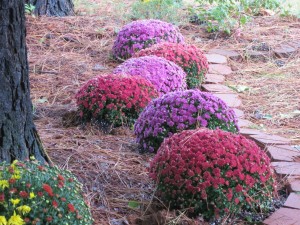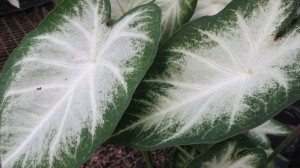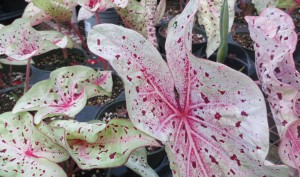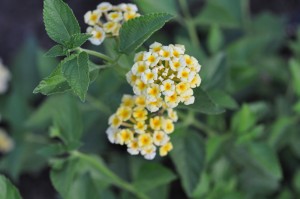KN, p. 210 “Search and Rescue Dogs”
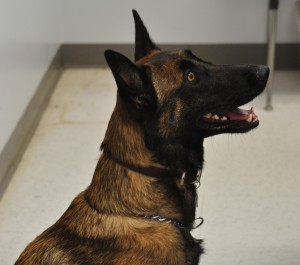
Rescue dogs are not to be confused with Search and Rescue dogs.
Rescue dogs have been found in terrible situations by kind people and are taken to safer homes. The dogs have been rescued by the people.
SEARCH and Rescue dogs locate people (whether alive or dead). The people have been rescued (or found) by the dogs.
Search and Rescue (SAR) dogs can be trained for both scenting the air and tracking the scent on the ground, but most dogs are trained to do one or the other. The dogs that are able to do both are more highly sought after by law enforcement agencies and SAR groups.
There are different skill sets for the various kinds of SAR dogs. Here are a few:
Air Scent Dogs
The air scent dog finds people by following human scent in the air where it is most intense. They work best in areas that are not public spaces, because this type of dog is not focused on any one person. Wind patterns, street smells, and even air temperature can affect the success of this dog’s search.
Trailing and Tracking Dogs
On TV or in the movies, we see dogs sniff for human scent in the air or after sniffing an article of clothing, track the person’s scent through the likely search area. Each person has a unique odor, which leaves a trail behind as we walk through a store, or in the park, or in the gym. When we go outside, that scent can be carried by the breeze for quite a distance. Think you’re not stinky? Or that after a shower, nobody could track your scent? Ha! Your coats, your scarves, your sweaters, your shoes, all hold your particular scent, and you can be followed.
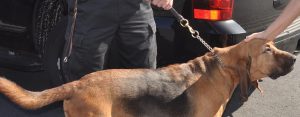
Tracking/trailing dogs also follow the trail by sniffing for skin cells that people shed naturally. When your skin flakes off, it leaves a trail on the ground (or bushes that you brush up against). Once a tracking dog knows the scent to be followed, it heads on a direct path to the target, and is often used to hunt down escaped convicts.
Bloodhounds have more scent glands than most other breeds, so they are prime candidates for tracking/trailing. Law enforcement officers (or the handler) keeps the dog on a leash, and holds a personal possession belonging to the missing person under his/her nose. The dog focuses on only that scent, despite distractions of all the surrounding aromas of other people or the environment itself. They are known to be highly successful in finding crime victims or missing persons, but with budget constraints, not all jurisdictions have them.
Disaster Dog
A disaster dog is trained to find people in wrecked buildings after natural disasters such as earthquakes or landslides. Sadly, their special abilities have been needed after terrorist attacks as well. Their noses zero in on human scent, focusing on people missing and hopefully still alive.
Cadaver Dog
A cadaver dog is trained to detect only dead humans, whether above or below the ground. While many dogs can find both dead or alive people, the cadaver dog has a narrower focus. While training, the dogs are introduced to tiny pieces of dead bodies or even blood droplets.
Water Search Dog
A trained water search dog can find people in or under the water, but their focus is on the smell of body gases that naturally come from cadavers in the water. The dog handler usually waits on shore while the dog does his/her job, then divers are dispatched if a scent is detected.
Avalanche Dog
Avalanche search dogs are capable of identifying human scent in or under snow after an avalanche. They have been known to find people alive, buried as much as 15 feet below the surface.
Search and Rescue dogs are highly trained and in great demand, as more jurisdictions discover their very real contribution to law enforcement and wilderness/disaster rescue. It takes years to train them to do their own specific job and while training, most live/stay with their handlers. The special bond created between handler and dog increases the success of the partnership during their missions.
There are national organizations that supervise the training and certification of SAR dogs and their handlers. Not just anyone with a German Shepherd or a Bloodhound (and other breeds as well) can join a search for a missing person or for a cadaver. It takes special training to cover a possible crime area thoroughly and efficiently, without compromising it or the evidence found there.
The dogs must pass rigorous certification tests, to make sure that they follow directions easily and are not bothered by the harshness of conditions they may face. Remember the collapse of the towers on September 11th? Conditions were unstable as well as dangerous, and the SAR dogs were challenged as seriously as the men and women responders at the site.
Both handlers and dogs are tested during the certification process.
Here are some of the skills the examiners look at for the dogs:
Dog Skills
- Did the dog indicate the initial direction of travel?
- Did the dog stay focused on the search?
- Is the dog easily refocused after being distracted?
- Does the dog scent discriminate?
- Does the dog search effectively (within 100 meters of track, on all legs)?
- Did the dog make a self-directed find on the subject?
- Did the dog demonstrated its final response and direct the handler to the subject?
- Did the dog identify the correct subject and only the correct subject?
Could your pet do any of the above, consistently and on demand? Our Irish Setter, Hammett, is a great dog, but his nose is focused on dinner and his treats. He would have to have been trained from the time he was a puppy to behave otherwise.
For more information about the various Search and Rescue operations around the USA, check out these sites:
http://www.vsar.org/SARdog.html
http://www.nasar.org/canine_sartech_i_trailing
Photo credits: taken at the Writers Police Academy.
KN, p. 210 “Search and Rescue Dogs” Read More »





